Imagine a place where rugged coastlines merge seamlessly into deep Norway’s fjords, where dramatic mountains and vibrant cultural cities are within arm’s reach, and where adventure awaits you in every breathtaking view. Welcome to Norway, a land that has mastered the art of weaving nature and culture into an unforgettable tapestry. This guide will not only reveal why Norway is an unmatched travel destination but also highlight the unparalleled adventure of the famous Norway in a Nutshell tour. Along the way, you’ll uncover practical insights, best travel practices, and hidden gems to maximize your Norwegian journey.
On the page:
What is the Norway in a Nutshell Tour?

For many travelers, the Norway in a Nutshell tour is the quintessential way to experience Norway’s grandeur. It isn’t just a simple itinerary—it’s an expertly curated journey that guides you through some of Norway’s most stunning landscapes in a single, yet immensely rich, trip. This legendary tour combines breathtaking fjord cruises, picturesque train rides, and scenic bus journeys.
The journey covers awe-inspiring highlights such as the majestic Aurlandsfjord and the narrow, UNESCO-listed Nærøyfjord, both arms of the larger Sognefjord. Along the way, you’ll also embark on the Flåm Railway, one of the world’s steepest and most scenic train lines. Its dramatic descent from the mountain station of Myrdal to the beautiful Flåm Valley will leave you speechless. Whether you’re looking for a pre-packaged tour or prefer to map out your own path, Norway in a Nutshell gives you the flexibility to customize your experience.
One of the most common questions is whether you can do this tour independently. Yes, you can absolutely design your own version of the Norway in a Nutshell experience. Booking individual legs of the journey (like train tickets and fjord cruises) gives you more control over your schedule, allowing you to linger in places that captivate your heart.
Why Norway? A Land of Timeless Beauty and Adventure
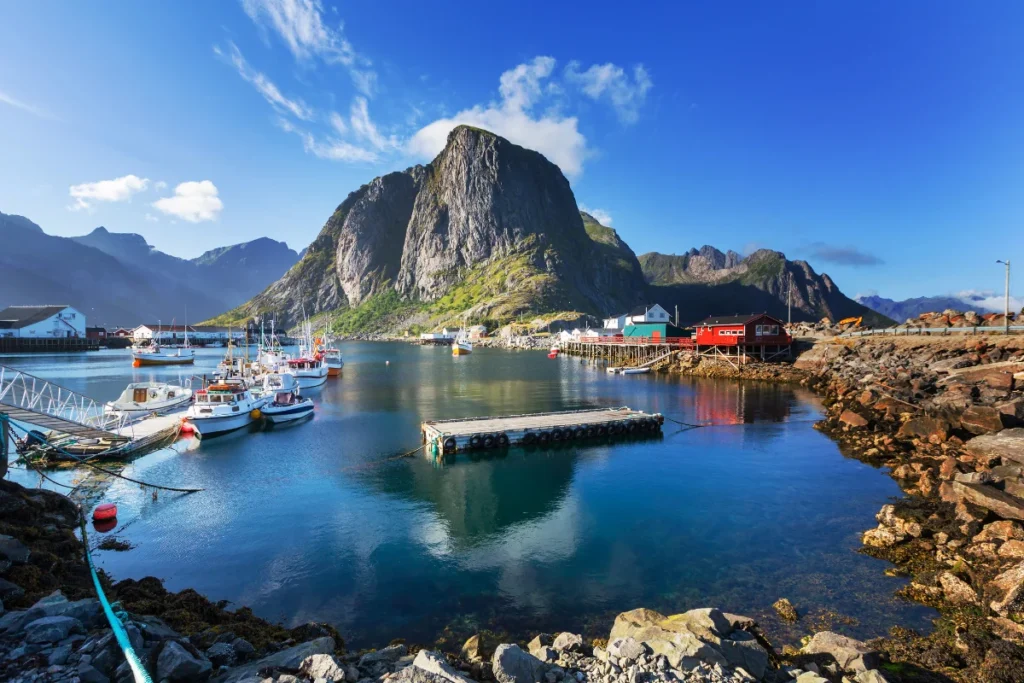
Norway is famous for a multitude of reasons. Its tourism is driven by striking natural landscapes that vary dramatically from one region to the next. Think iconic fjords like Geirangerfjord and Sognefjord, pristine archipelagos, and the spellbinding northern lights. But Norway’s allure extends beyond its natural wonders. It boasts rich Viking history, a forward-thinking cultural scene, and some of the best outdoor activities you can find anywhere.
While many people are drawn to the country’s adventure sports and picturesque hikes, urban areas like Oslo, Bergen, and Tromsø offer museums, art galleries, and culinary scenes that celebrate both tradition and innovation. Whether you’re an adrenaline junkie, a history buff, or someone seeking the ultimate natural retreat, Norway has something for everyone.
Tourism in Norway: What to Expect
Tourism in Norway is a well-oiled machine, driven by a commitment to sustainability and quality experiences. You can expect impeccable service and pristine, well-maintained tourist spots. However, this also means that Norway tends to be expensive. Basic commodities and services often come with a hefty price tag, but the unforgettable experiences make it worth every penny. For example, a standard meal could cost around $25-$35, while a simple coffee might set you back $4-$6.
But don’t let that deter you! There are ways to enjoy Norway on a budget. Opt for public transportation, cook your own meals using fresh local produce, and take advantage of free natural attractions like hiking trails and scenic viewpoints. The Norwegian right to roam, known as “allemannsretten,” allows you to camp freely in open countryside areas, further helping to stretch your budget.
When and Where to Go
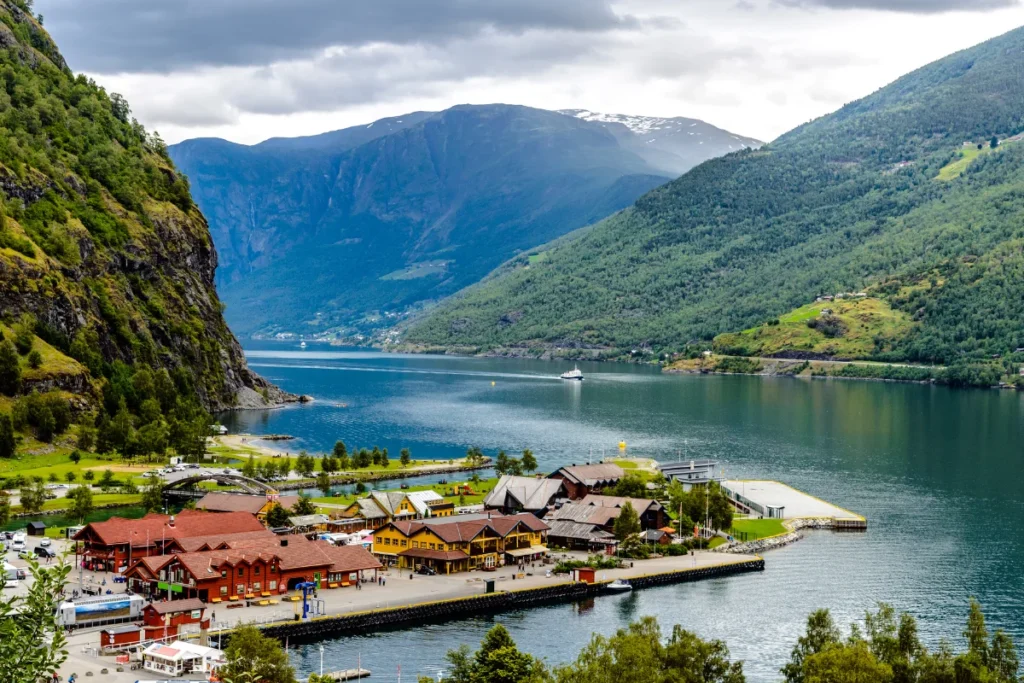
Timing is crucial when visiting Norway. The summer months (June to August) are ideal for experiencing the midnight sun, warm weather, and hiking opportunities. This is also the peak tourist season, so prepare for crowds at popular spots like the Trolltunga and Preikestolen. Autumn (September to November) presents a more tranquil experience, with fall colors painting the landscape, while winter (December to March) is perfect for northern lights chasers and snow-based activities like skiing or dog sledding.
Norway’s landscape transforms dramatically with each season, so timing your visit can significantly affect your experience.
Summer (June to August): Summer is the perfect time to experience Norway’s famous midnight sun, with extended daylight hours, warm weather, and endless outdoor opportunities. The season invites travelers to explore the country’s scenic landscapes, from dramatic cliffs to winding coastal roads. With long days and ideal temperatures, you can hike breathtaking trails, camp under bright skies, and travel easily between Norway’s iconic sites. However, summer is also peak tourist season, so expect more crowds, especially at popular spots like Trolltunga and Preikestolen (Pulpit Rock).
Must-visit destinations: Geirangerfjord, Trolltunga, and the Lofoten Islands for midnight sun views.
Autumn (September to November): Norway’s autumn offers a serene escape, with fewer tourists and landscapes blanketed in stunning fall colors. The cooler temperatures make it an ideal season for those who prefer a peaceful atmosphere and moderate weather. It’s a great time for hiking through vibrant forests and scenic drives along fjords, showcasing the beauty of Norway’s countryside in warm hues of red, orange, and gold. While rain can be more frequent in the fall, the quieter trails, cozy village stays, and breathtaking autumn scenery create a unique and memorable experience for those who venture out during this picturesque season.
Best places for autumn beauty: Try Senja Island or the area around Røros for vibrant foliage and charming small-town vibes.
Winter (December to March): Winter transforms Norway into a snow-covered wonderland, ideal for those chasing the Northern Lights and enjoying snow-based adventures. Head to the Arctic regions, particularly near Tromsø or Alta, where clear, dark skies provide the best opportunities to witness the magical aurora borealis. Beyond the lights, Norway’s winter landscape offers countless activities: ski through pristine snow-covered forests, explore serene trails on snowshoes, embark on thrilling dog sledding expeditions, or experience traditional reindeer safaris with the indigenous Sámi people. Winter in Norway is a dream for outdoor enthusiasts and those seeking the ethereal beauty of the Arctic in its most magical season.
Top winter activities: Northern Lights viewing, Sami reindeer experiences, skiing in Hemsedal or Trysil.
Spring (April to May): Spring in Norway brings blossoming landscapes, fewer crowds, and pleasantly mild temperatures. May is especially stunning, as fields and mountainsides come alive with fresh greenery and wildflowers in full bloom. This season offers a perfect balance for travelers, with thawing fjords reflecting clear skies, ideal conditions for early hiking, and picturesque fjord cruises without the high-season rush. It’s a great time to explore Norway’s scenic trails, visit charming villages, and see nature awakening from winter’s chill, making spring a refreshing and peaceful time to experience this breathtaking natural beauty.
Best places for springtime: Explore the blossoming Hardangerfjord region, known for its apple orchards and cherry blossoms.
Exploring Norway’s Iconic Destinations
Here are Norway’s must-visit regions and sights:
Oslo: The capital city has museums, galleries, and outdoor activities that reflect both modern and ancient Norway. Visit the Oslo Opera House, which offers city views from its roof, and explore Viking history at the Viking Ship Museum. Oslo’s Vigeland Sculpture Park is another highlight, housing over 200 sculptures by Gustav Vigeland.
- Local tip: Oslo’s museums are free on certain days or with the Oslo Pass, so plan your visit accordingly to save money.
The Fjords: Norway’s fjords are its most famous attraction. Each fjord has unique views and experiences to offer. The Geirangerfjord is a UNESCO World Heritage site known for its steep cliffs and waterfalls. Sognefjord, the longest fjord in Norway, offers views of glaciers, mountains, and deep blue waters.
- Top spots: Geiranger Skywalk at Dalsnibba for panoramic views, and the Nærøyfjord for narrow, breathtaking cliffs.
Bergen: Bergen is a city full of charm and beauty. Explore Bryggen, a historic area with colorful, wooden Hanseatic buildings along the waterfront. Take the Fløibanen funicular for a view over the city and the fjords, or try some local seafood at the bustling Bergen Fish Market.
- Local tip: Bergen’s cultural scene is vibrant, with frequent music festivals and art events, especially in summer.
Lofoten Islands: With dramatic mountains, colorful fishing villages, and opportunities for sea kayaking, the Lofoten Islands are a photographer’s dream. Reinebringen offers one of the best viewpoints in Lofoten, though it requires a steep hike. If you’re interested in local culture, visit a traditional fishing village to learn about cod fishing, a mainstay of the region.
Tromsø and the Arctic: In the Arctic Circle, Tromsø is known as the gateway to the Northern Lights. During the day, enjoy snow-based activities like reindeer sledding and cross-country skiing. Tromsø’s Polaria museum offers a fascinating look at Arctic marine life, and local Sami culture can be experienced through reindeer safaris and traditional food.
- Local tip: Try Tromsø’s famous seafood, especially king crab, for an authentic Arctic experience.
Wondering how many days you need to see Norway?
It depends on what you want to cover. A week allows you to explore a mix of fjords, cities, and countryside, but to truly appreciate the country’s beauty, 10-14 days is ideal. The most popular tourist attraction is undoubtedly the Geirangerfjord, a UNESCO World Heritage Site famed for its breathtaking waterfalls and majestic cliffs.
Oslo, the capital, is often a debated stop for travelers. While it’s rich in museums and urban culture, some feel that it pales in comparison to Norway’s natural landscapes. If you’re tight on time, you may prefer focusing on areas like Bergen or the Lofoten Islands. Bergen, with its colorful wooden houses and access to the fjords, often wins the title of Norway’s most charming city.
Navigating Language, Currency, and Cultural Norms
Communication is rarely a problem for English speakers. Norwegians are highly proficient in English, making it easy for tourists to get around without needing to learn Norwegian. Signs and information in tourist areas are usually bilingual, and locals are friendly and helpful.
Currency-wise, Norway uses the Norwegian krone (NOK), not the euro. Credit cards are widely accepted, even in rural areas, but it’s a good idea to have some cash for emergencies or small transactions. Public transportation, including Norway’s famous trains and coastal ferries, is efficient and well-connected. For those staying in cities, Oslo even offers some free train rides under certain circumstances.
A Nature Lover’s Dream: Scenic Stops and Best Attractions
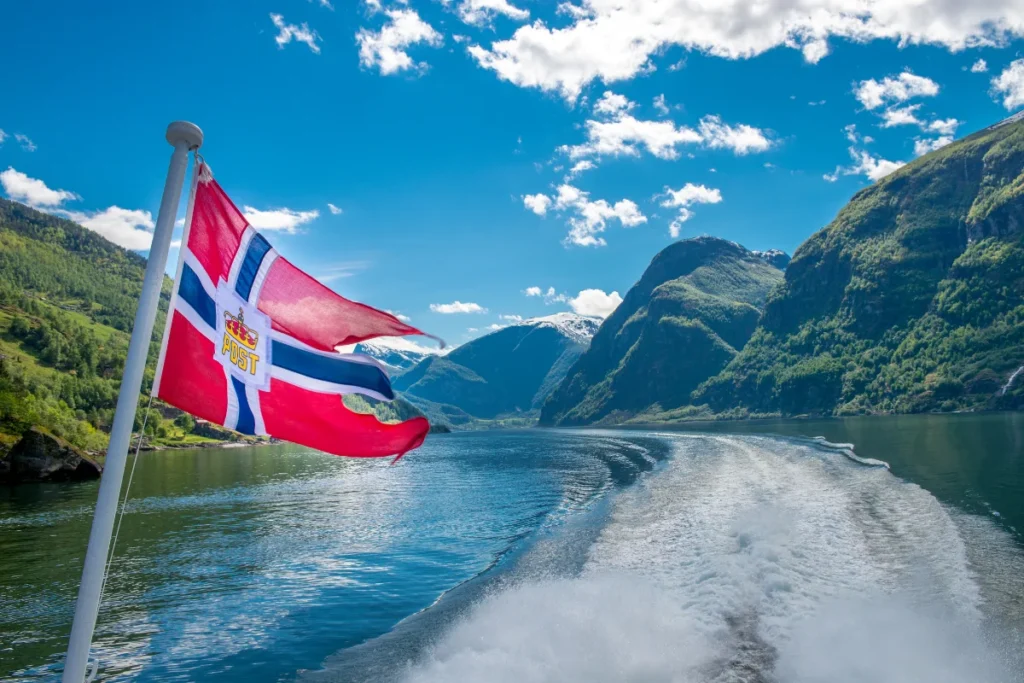
Choosing where to stop on your Norway in a Nutshell adventure can be daunting, but here are some must-see highlights:
- Flåm: Nestled at the end of Aurlandsfjord, Flåm is famous for its dramatic fjord views and the Flåm Railway. Stop at Aegir Brewery, known for its Viking-inspired decor and craft beer, or visit the Flåm Church, a charming wooden building from the 17th century.
- Gudvangen: This small village at the mouth of the Nærøyfjord offers jaw-dropping fjord views and the chance to visit the Viking Village, where you can experience Norse culture firsthand.
- Bergen: Known as the “Gateway to the Fjords,” Bergen combines history, nature, and culture. Explore the Bryggen area, a UNESCO World Heritage site with colorful wooden houses, and take the Fløibanen funicular for panoramic city views.
The Lofoten Islands and the Arctic region around Tromsø are also considered some of the prettiest parts of Norway. These places showcase jagged peaks, idyllic fishing villages, and endless Arctic beauty.
Practical Tips for Travelers
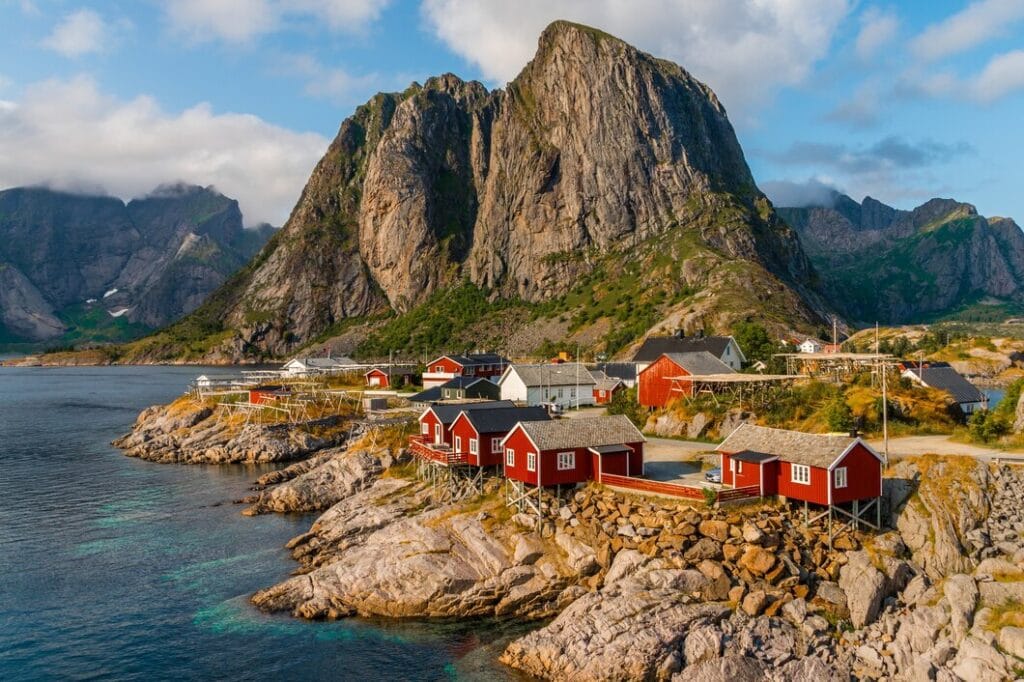
One common question is whether Norway is budget-friendly. While it is generally expensive, it’s possible to travel affordably with some planning. Cooking your meals, choosing budget accommodations, and taking advantage of Norway’s numerous free outdoor activities are great ways to save. Remember that the cheapest month to visit is typically late winter or early spring, though you’ll need to prepare for cold weather and shorter daylight hours.
The rainiest month is typically September, so pack appropriately if you’re visiting then. Layers are key, and having waterproof clothing is essential for outdoor excursions. As for cultural etiquette, Norwegians value politeness and personal space. Tipping is appreciated but not required, as service staff are well-paid.
Touring Norway is also a matter of deciding the best travel method for you. Trains, buses, and ferries are excellent options, and scenic routes like the Bergen Railway offer some of the most beautiful views. Renting a car is another great way to explore at your own pace, especially in more remote regions, though fuel prices are high.
Essential Insights: Euros, Luggage, and More
Can you use euros in Norway? Unfortunately, no. You’ll need Norwegian krone, but credit and debit cards are widely accepted. Regarding luggage, if you’re taking public transportation or embarking on a scenic fjord cruise, it’s best to travel light. Norway’s landscape can be rugged, so being mobile and nimble will make your adventure smoother.
You may also like : The 11 Alaska Cruises Ships : A Comprehensive Comparison
Norway on a Budget: Essential Tips for Affordable Travel
Norway’s reputation as an expensive destination is well-earned, but with careful planning, you can explore its wonders without breaking the bank. Here’s how:
- Food: Grocery stores like Rema 1000, Kiwi, and Coop offer fresh produce and affordable options. Try local foods like brown cheese, gravlaks (cured salmon), and Norwegian hot dogs, which you’ll find at kiosks throughout the country.
- Accommodation: Look into hostels, Airbnb rentals, and camping. Norway’s “allemannsretten” (freedom to roam) law allows camping on uncultivated land, giving budget travelers a scenic, free way to experience nature.
- Transportation: Public transport is efficient and scenic. Regional rail passes or the Norway in a Nutshell combination tickets can offer savings and breathtaking views. For maximum freedom, consider renting a car (though fuel costs can be high).
The question of how much money you’ll need varies. A budget traveler could survive on $100-$150 a day, while those looking for more comfort might need $250 or more. Cash isn’t often necessary, but having a small amount on hand is wise.
Norway vs. Iceland: Which is Better?
Both Norway and Iceland are spectacular, but they offer different experiences. Norway is best for fjord enthusiasts and hiking lovers, while Iceland provides a unique volcanic landscape and dramatic scenery. If you have to choose, consider what draws you most—lush green fjords or stark volcanic beauty.
Final Thoughts: The Beauty of Norway Awaits
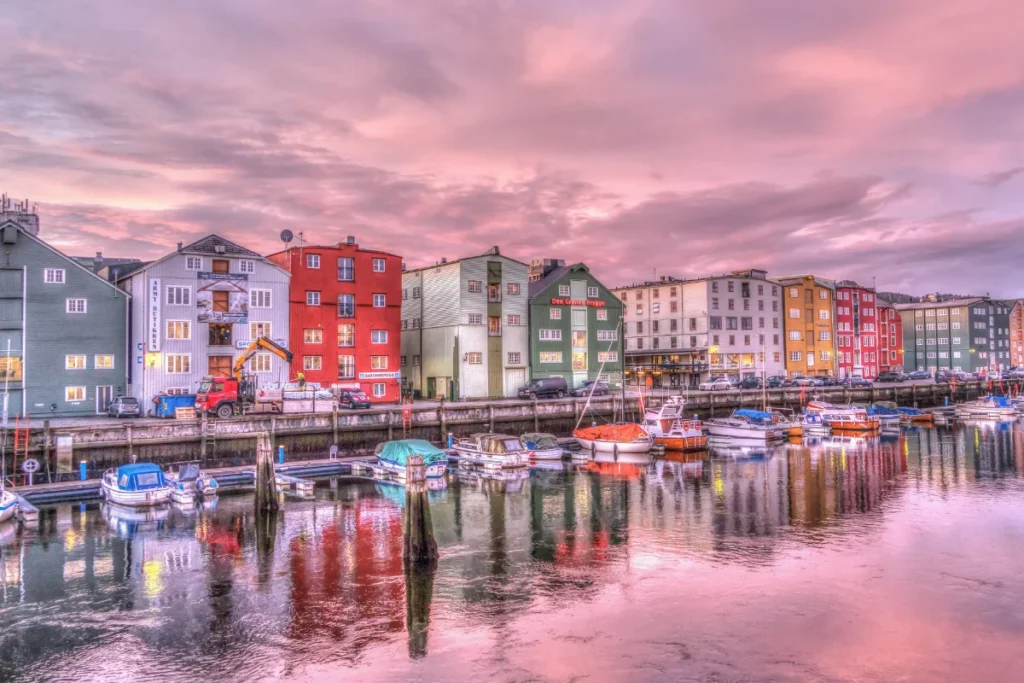
Norway’s truth, it is a country that needs to be seen to be believed. Its natural beauty, combined with a rich cultural heritage, makes it one of the world’s top travel destinations. Whether you’re navigating fjords on the Norway in a Nutshell tour, exploring vibrant cities, or chasing the northern norway’s lights, every moment in Norway feels like a brushstroke in a masterpiece. From majestic fjords to charming cities, Norway awaits with open arms, ready to leave an everlasting impression on your heart.




3 thoughts on “Discover Norway’s Magic: Your Ultimate Travel Guide 2025”